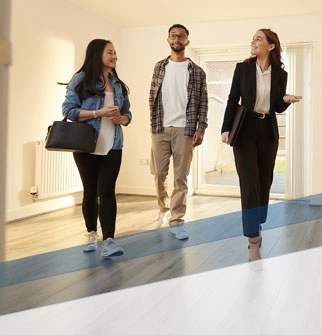

What Is a Final Walkthrough When You’re Buying a Home?
Learn What You Should Expect and What to Look for
Before you close on your mortgage, you should do a final walkthrough of the home you’re about to buy. This allows you to check that the home is in the condition you’d expect and that any previously agreed-upon repairs to the home or property are complete. Read on to learn what to expect from a final walkthrough and how you can prepare.
What Is a Final Walkthrough?
A final walkthrough is your last chance to assess the state of a home before you finalize and close on your mortgage. They allow you to check the home for damage, problems, or other concerns and ensure that the home is in the condition the seller promised. Final walkthroughs are not required but are highly recommended. The final walkthrough is also an opportunity to verify that the seller has completed any repairs or updates to the home or property that were promised during negotiations.
Who Attends a Final Walkthrough?
Typically, the final walkthrough is only for the buyer and the buyer’s real estate agent to attend. The seller and the seller’s real estate agent usually do not attend. This gives the buyer and their agent plenty of time and space to look at the property without any pressure.
What Should You Look for During a Final Walkthrough?
During the final walkthrough, you should complete a visual assessment of the home and should do a hands-on inspection. This should include checking for any obvious damage to both the inside and outside of the home.
The previous homeowner should have completely moved out of the home by the time of the final walkthrough. Many sale agreements include that the sellers leave the property in “broom-swept” condition. This means that the home should be free of dust and debris, and the seller should have removed all their belongings.
Common items you should check for during the final walkthrough include making sure the home is empty, any previously agreed-upon repairs have been completed, and everything is in working order. Here’s a to-do list to get you started:
- Test the HVAC
- Flush the toilets and run the faucets and showers
- Check the outlets, lights, and doorbell
- If any appliances are included with the home, test and make sure they work (i.e., microwave, dishwasher, refrigerator, washer, dryer, garbage disposal, etc.)
- Open and close windows, doors, and accompanying locks
- Check for mold or pests
How Long Does a Walkthrough Typically Take?
Expect a final walkthrough to take at least half an hour or a few hours if the house or property is large. It’s important to take your time during your walkthrough to ensure the home is in the condition you’d expect it to be in before you’re the homeowner.
When Should You Schedule a Final Walkthrough?
It’s best to schedule a final walkthrough around 24 hours before closing. You’ll also want to complete the walkthrough when the home is unoccupied, so you can get a better idea of the home’s condition.
What Should You Bring with You to a Final Walkthrough?
There are several items you should bring with you to a final walkthrough:
- Agreement of Sale and home inspection reports. If the homeowner is responsible for any previously agreed-upon repairs, the Agreement of Sale and home inspection reports are a good way to keep track of what should be completed and how the house should look.
- A notepad or your phone. You should write down any problems you or your agent find. If you have questions about the home, this is a good way to keep track of them and ask about it at closing. The camera on your phone will also allow you to take photos of your concerns or jog your memory about a question to ask the previous homeowner.
- Something to test the outlets. It’s important to make sure the electricity and appliances in the home are functioning properly.
- Flashlight. A flashlight can come in handy in dark areas, like a basement or attic, that don’t have a natural or artificial light source of their own.
What Should You Do If You Find Issues During the Final Walkthrough?
If you find any issues during your final walkthrough, tell your real estate agent. They can help you communicate with the seller. This may delay the closing process, but the seller may need additional time to resolve the issues, or your agents may need time to renegotiate the sale. The seller might also provide a credit at closing in lieu of making repairs.
What Is the Difference Between a Walkthrough and a Home Inspection?
A home inspection is a formal assessment of a property by a paid professional that determines a home’s condition and if it needs repairs. Home inspections are completed much earlier in the buying process than a final walkthrough. A final walkthrough is the buyer’s last chance to inspect the home they’re going to buy before the transaction is official.
Last reviewed and updated April 2025 by Freedom Mortgage

